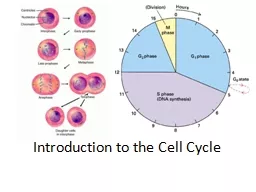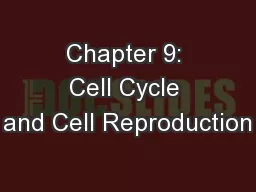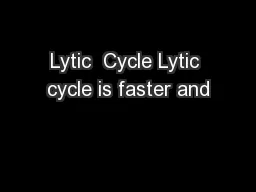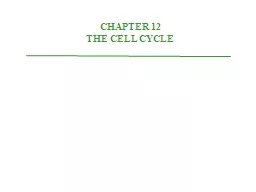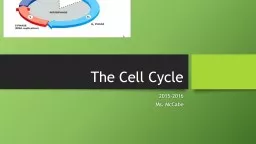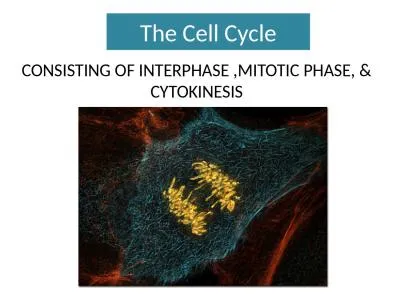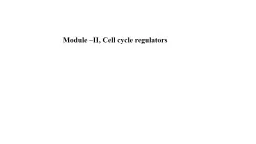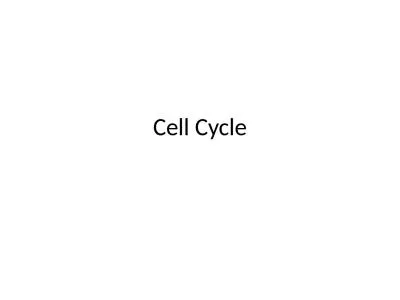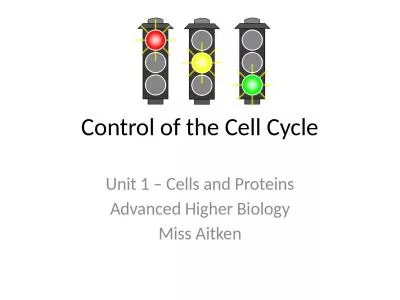PPT-Introduction to the Cell Cycle
Author : rodriguez | Published Date : 2022-06-08
Why do cells need to divide As cells grow larger they start to face several difficulties in functioning Growth amp Repair In order for multicellular organisms
Presentation Embed Code
Download Presentation
Download Presentation The PPT/PDF document "Introduction to the Cell Cycle" is the property of its rightful owner. Permission is granted to download and print the materials on this website for personal, non-commercial use only, and to display it on your personal computer provided you do not modify the materials and that you retain all copyright notices contained in the materials. By downloading content from our website, you accept the terms of this agreement.
Introduction to the Cell Cycle: Transcript
Download Rules Of Document
"Introduction to the Cell Cycle"The content belongs to its owner. You may download and print it for personal use, without modification, and keep all copyright notices. By downloading, you agree to these terms.
Related Documents

